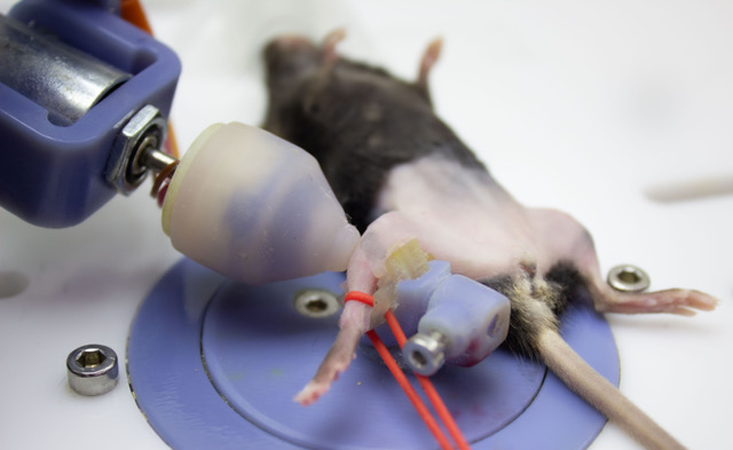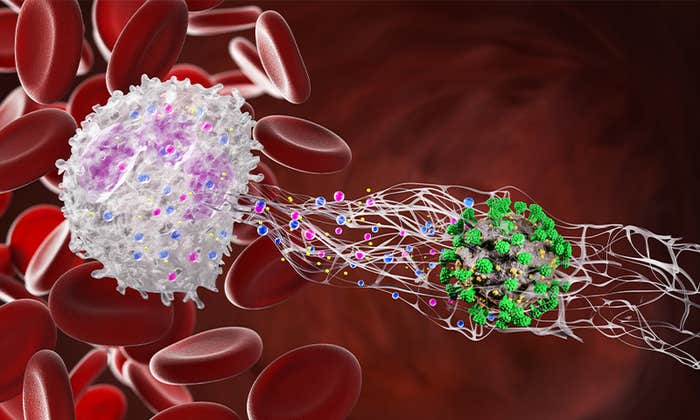If you’re an athlete—even a very occasional one—odds are you’ve dealt with a muscle injury at some point. After all, muscle injuries account for 10 to 55 percent of sports traumas. Often they’re just a nuisance—say, a minor strain that takes you a couple days to get back on your feet. But severely injured muscles, such as muscles that have been torn, frequently require treatment involving medication and invasive surgeries, and recovery can take a long time.
However, recent research suggests that something as simple as massaging the injury site can speed up healing. A study recently published in Science Translational Medicine found that massage therapy can directly improve the regeneration of severely injured muscles. Not only that, but the benefits from “mechanotherapy”—the scientific term for massage—may be comparable to the more invasive pharmaceutical and surgical interventions.
The study was led by Bo Ri Seo of Harvard’s Wyss Institute for Biologically Inspired Engineering and John A. Paulson School of Engineering and Applied Sciences (SEAS). Seo and her collaborators designed a custom massage gun for mice. Every day for two weeks, mice with severe leg injuries received two 5-minute massage sessions targeting the injured tissues. The researchers found that the treated mice’s legs had fewer damaged muscle fibers than mice who did not receive the massage therapy. The treated mice also had larger muscle fibers at the injury site. In other words, the massage therapy was helping the mouse muscles to heal both faster and stronger.
What was less clear, however, was the mechanism that allowed massage therapy to have such an observable effect. “One clue we had is that tissue regeneration is regulated by immune responses,” Seo said. “So we decided to look at how mechanical loading can affect immune responses during these regeneration processes.”
Typically after an injury, the first immune cells to arrive at the site are neutrophils, a type of white blood cell. The neutrophils kill and remove damaged tissues and then leave the injury site so that other immune cells can continue the healing process. With severe injuries, however, neutrophils will sometimes overstay their welcome. Previous studies have shown that if neutrophils stick around for too long, they can start attacking healthy tissues as well.
Seo and her team found that by the third day of the study, the massage-treated muscle had much fewer neutrophils than the untreated muscle. Even more interesting was that when neutrophils were present for a prolonged period of time, they inhibited muscle stem cells from differentiating into new muscle fibers. In other words, the earlier the neutrophils departed, the faster the new muscle could develop.
So, massage therapy helps to clear out the neutrophils. How? By quite literally squeezing them out of the injured tissue, like squeezing juice out of an orange. It’s the same mechanism that allows mechanotherapy to squeeze toxins out of tissues, another benefit of massage. The big discovery here is that physical compression can actually impact the way the immune system works in the body.

Immunotherapy has been a burgeoning area of focus in cancer research, but less so in tissue regeneration. “Mechanical loading and immune responses have not yet been studied together,” said Seo. “Hopefully we can build up the field at their intersection in regenerative medicine.”
In addition to treating torn muscles, Seo thinks that massage therapy could treat a wide range of ailments, from peripheral artery disease to inflammatory myopathy. Her team has already found that mechanotherapy yields results that are comparable with stem cell surgery and VEGF-based therapy—and that’s a big deal, according to Seo. Massage therapy is of course much less invasive than surgery, as well as less technically complex, which translates to lower risk and more predictable outcomes.
Much more needs to be studied before these applications could be possible. For instance, studies on mice don’t always translate to humans. Seo’s team has already designed a model that can scale the effective force range to be used on larger animals. This force range will also be important in determining how to apply pressure to a painful injury in a way that provides treatment without hurting the patient.
Another consideration: Muscle injuries are often accompanied with other issues, such as bleeding, fractures, or tendon tears. “Different types of trauma might mean that the same principles wouldn’t apply,” said Tammy Martin, an orthopedic surgeon at Brigham and Women’s Hospital.
However, she thinks the research addresses a question that athletes, among others, would love to see answered. “As we learn more about our bodies, and how they work and heal, factors like this will be important to help us understand how best to navigate injury,” she said.
Perhaps someday soon massage therapy will be thought of as not just a treat for our weary and damaged muscles, but a practical option for healing them.
Anna Gibbs is a science journalist from Ipswich, Massachusetts. Her work has appeared in Earth Island Journal, Terrain.org, and The Harvard Gazette. You can read more of her writing at www.annamcloud.com.
Lead Image by Bartek Zyczynski / Shutterstock























